Home>diy>Home Improvement>How Do Home Renovation Loans Work


Home Improvement
How Do Home Renovation Loans Work
Modified: January 5, 2024
Learn how home renovation loans work and finance your next home improvement project. Get the funding you need to transform your home with a home-improvement loan.
(Many of the links in this article redirect to a specific reviewed product. Your purchase of these products through affiliate links helps to generate commission for Storables.com, at no extra cost. Learn more)
Introduction
Home renovation projects can be exciting yet challenging endeavors. Whether you want to upgrade your kitchen, remodel a bathroom, or add an extra room to your house, the cost of these improvements can often be overwhelming. This is where home renovation loans come in. They provide homeowners with the financial means to fund their renovation projects while ensuring they have manageable repayment options.
A home renovation loan is a type of loan that is specifically designed to help homeowners finance the costs associated with renovating or improving their homes. These loans are a practical solution for those who may not have the funds readily available or wish to avoid using up their savings for home renovations.
In this article, we will delve into the world of home renovation loans, exploring the different types available, the eligibility criteria, the application process, repayment options, benefits, drawbacks, and alternatives. By understanding how home renovation loans work, you will be able to make informed decisions and turn your dream home into a reality.
Key Takeaways:
- Home renovation loans offer homeowners a convenient and affordable way to finance their renovation projects, providing access to funds, flexible repayment options, and the potential for increased home value.
- While home renovation loans have benefits, such as low interest rates and convenience, it’s crucial to carefully consider the drawbacks, assess alternative financing options, and manage finances responsibly to ensure a successful renovation experience.
Read more: How Home Improvement Loans Work
Understanding Home Renovation Loans
Before we dive into the specifics of home renovation loans, it’s crucial to understand the basic concept behind them. Home renovation loans are a form of financing that allows homeowners to borrow money for the purpose of renovating, remodeling, or improving their homes.
These loans can cover a wide range of expenses, including but not limited to, structural changes, electrical upgrades, plumbing improvements, flooring replacement, kitchen renovations, bathroom remodels, and landscaping projects.
Home renovation loans typically come with low interest rates and flexible repayment terms, making them an attractive option for homeowners. They provide the opportunity to spread out the cost of renovations over an extended period, making it easier to manage the financial burden.
Types of Home Renovation Loans
When it comes to home renovation loans, there are several options available. Let’s take a closer look at some of the most common types:
- Personal Loans: Personal loans are a versatile option that can be used for various purposes, including home renovations. These loans offer flexibility in terms of borrowing amounts and repayment periods, but they usually come with higher interest rates compared to other types of home renovation loans.
- Home Equity Loans: Home equity loans allow homeowners to borrow against the equity they have built up in their homes. This type of loan typically comes with fixed interest rates and longer repayment terms, making it suitable for larger renovation projects. However, keep in mind that using a home equity loan puts your home at risk if you are unable to make the necessary loan repayments.
- Home Equity Lines of Credit (HELOC): HELOCs work similarly to home equity loans, but instead of receiving a lump sum, you are given a line of credit that you can draw from as needed. This provides you with greater flexibility in managing your renovation expenses.
- Federal Housing Administration (FHA) 203(k) Loans: FHA 203(k) loans are specifically designed for homebuyers and homeowners who wish to purchase or refinance a property that needs renovations. These loans package the cost of the home purchase or refinancing plus the renovation expenses into one mortgage.
Each type of home renovation loan has its own set of terms and conditions, so it’s important to carefully consider your needs and financial situation before choosing the most suitable option.
Key Takeaways:
- Home renovation loans offer homeowners a convenient and affordable way to finance their renovation projects, providing access to funds, flexible repayment options, and the potential for increased home value.
- While home renovation loans have benefits, such as low interest rates and convenience, it’s crucial to carefully consider the drawbacks, assess alternative financing options, and manage finances responsibly to ensure a successful renovation experience.
Read more: How Home Improvement Loans Work
Understanding Home Renovation Loans
Before we dive into the specifics of home renovation loans, it’s crucial to understand the basic concept behind them. Home renovation loans are a form of financing that allows homeowners to borrow money for the purpose of renovating, remodeling, or improving their homes.
These loans can cover a wide range of expenses, including but not limited to, structural changes, electrical upgrades, plumbing improvements, flooring replacement, kitchen renovations, bathroom remodels, and landscaping projects.
Home renovation loans typically come with low interest rates and flexible repayment terms, making them an attractive option for homeowners. They provide the opportunity to spread out the cost of renovations over an extended period, making it easier to manage the financial burden.
One key advantage of home renovation loans is that they allow homeowners to increase the value of their property. By investing in home improvements, you can enhance the aesthetic appeal, functionality, and energy efficiency of your home, potentially leading to higher resale value in the future.
Home renovation loans eliminate the need to dip into your savings or rely on credit cards to fund your renovation projects. Instead, you can borrow the necessary funds and repay the loan over time, ensuring you have control over your budget and financial stability.
It’s important to note that not all home renovation loans are created equal. The terms and conditions, interest rates, and loan limits can vary depending on the lender and the type of loan you choose. It’s crucial to shop around, compare loan offers, and carefully review the terms before making a decision.
Additionally, keep in mind that home renovation loans are typically secured loans, meaning they are backed by the value of your property. If you fail to make your loan payments, the lender has the right to take possession of your home. It’s crucial to assess your financial situation and ensure you can comfortably afford the loan repayments before committing to a home renovation loan.
In summary, home renovation loans are a valuable tool that homeowners can utilize to finance their renovation projects. These loans offer flexibility, low interest rates, and the ability to spread out the cost of improvements over time. By understanding the basics of home renovation loans and carefully considering your options, you can embark on your home improvement journey with confidence and turn your dream home into a reality.
Types of Home Renovation Loans
When it comes to home renovation loans, there are several options available. Let’s take a closer look at some of the most common types:
- Personal Loans: Personal loans are a versatile option that can be used for various purposes, including home renovations. These loans offer flexibility in terms of borrowing amounts and repayment periods, but they usually come with higher interest rates compared to other types of home renovation loans.
- Home Equity Loans: Home equity loans allow homeowners to borrow against the equity they have built up in their homes. This type of loan typically comes with fixed interest rates and longer repayment terms, making it suitable for larger renovation projects. However, keep in mind that using a home equity loan puts your home at risk if you are unable to make the necessary loan repayments.
- Home Equity Lines of Credit (HELOC): HELOCs work similarly to home equity loans, but instead of receiving a lump sum, you are given a line of credit that you can draw from as needed. This provides you with greater flexibility in managing your renovation expenses.
- Federal Housing Administration (FHA) 203(k) Loans: FHA 203(k) loans are specifically designed for homebuyers and homeowners who wish to purchase or refinance a property that needs renovations. These loans package the cost of the home purchase or refinancing plus the renovation expenses into one mortgage.
Each type of home renovation loan has its own set of terms and conditions, so it’s important to carefully consider your needs and financial situation before choosing the most suitable option.
Personal loans are a popular choice for smaller renovation projects. They offer the advantage of quick approval and flexibility in terms of the loan amount. With a personal loan, you can borrow a fixed amount and repay it over a set period, typically with fixed monthly installments. However, be mindful of the higher interest rates associated with personal loans.
Home equity loans are ideal for larger renovation projects where you require a substantial amount of funding. By leveraging the equity in your home, you can access a lump sum of money with a fixed interest rate and a longer repayment term. It’s important to carefully assess your financial situation and ensure that you can comfortably afford the loan payments, as defaulting on a home equity loan could result in the foreclosure of your property.
For homeowners who prefer flexibility in their renovation financing, a home equity line of credit (HELOC) may be the ideal option. A HELOC allows you to borrow money up to a certain limit and withdraw funds as needed. You only pay interest on the amount you borrow, and as you repay the loan, the funds become available for future use.
If you are in the process of purchasing a home that needs renovations, or if you want to refinance your existing mortgage while also financing renovation costs, an FHA 203(k) loan could be the right choice. These loans are backed by the Federal Housing Administration and provide a convenient way to combine the costs of purchasing or refinancing with the expenses of home improvements.
Before deciding on the right type of home renovation loan, it’s essential to consider factors such as the loan amount you require, your repayment capacity, interest rates, and the overall cost of borrowing. Additionally, carefully review the terms and conditions of each loan option to ensure they align with your financial goals and long-term plans.
By understanding the different types of home renovation loans available, you can choose the one that best fits your needs and embark on your home improvement project with confidence.
Read more: How Do Construction Loans Work?
Eligibility Criteria for Home Renovation Loans
When applying for a home renovation loan, there are certain eligibility criteria that lenders typically consider. While specific requirements may vary depending on the lender and the type of loan, here are some common factors to keep in mind:
1. Credit Score: Your credit score plays a significant role in determining your eligibility for a home renovation loan. Lenders use your credit score to assess your creditworthiness and likelihood of repaying the loan. A higher credit score generally increases your chances of loan approval and may qualify you for lower interest rates. It’s advisable to review your credit report beforehand and address any errors or negative factors that can impact your score.
2. Income and Employment Stability: Lenders will typically require proof of a stable income to ensure that you have the financial capacity to repay the loan. This includes providing employment details, such as current job position, length of employment, and income documentation, such as pay stubs or tax returns. A consistent and reliable income source strengthens your loan application.
3. Debt-to-Income Ratio: Lenders also consider your debt-to-income ratio, which compares your monthly debt obligations to your monthly income. This ratio helps them assess your ability to take on additional debt and manage loan repayments. It’s advisable to keep your debt-to-income ratio below a certain threshold to increase your chances of loan approval.
4. Home Equity or Down Payment: Depending on the type of loan, lenders may require a minimum amount of home equity or down payment. For home equity loans or HELOCs, lenders typically allow you to borrow up to a certain percentage of your home’s appraised value, minus any outstanding mortgage balance. If you’re applying for an FHA 203(k) loan, you may need a down payment based on the purchase price or the appraised value after renovations.
5. Documentation: Lenders will require various documents during the application process, including identification documents, proof of income, bank statements, tax returns, and details about the renovation project. Be prepared to provide all necessary documentation to expedite the loan approval process.
6. Loan-to-Value Ratio (LTV): The loan-to-value ratio measures the loan amount compared to the appraised value of the property. Different loan programs may have specific requirements for the maximum LTV ratio. It’s important to understand the LTV ratio criteria of the loan you are applying for, as it can impact the loan approval process.
7. Other Financial Obligations: Lenders may also take into consideration other financial obligations, such as existing loans, credit card debt, and monthly expenses. They will assess your ability to handle additional loan payments while comfortably managing your existing financial commitments.
It’s important to note that meeting the eligibility criteria does not guarantee loan approval. Lenders will evaluate your application based on their internal policies, risk assessment, and other relevant factors. Therefore, it’s crucial to present a strong loan application, maintain a good credit profile, and provide accurate and complete documentation.
Before applying for a home renovation loan, take the time to review the eligibility requirements of different lenders and loan options. This will help you determine which loans you are most likely to qualify for and enable you to choose the option that aligns with your financial situation and goals.
By understanding the eligibility criteria for home renovation loans, you can prepare yourself for the application process and increase your chances of securing the financing you need to bring your renovation plans to life.
When considering a home renovation loan, be sure to research and compare different loan options to find the best terms and interest rates for your specific project. Additionally, make sure to have a clear understanding of the loan terms and repayment schedule before committing to any loan.
Applying for a Home Renovation Loan
Once you have determined the type of home renovation loan that best suits your needs, it’s time to move forward with the application process. Applying for a home renovation loan involves several steps, and being prepared can help streamline the process and improve your chances of approval. Here’s a step-by-step guide on how to apply for a home renovation loan:
1. Research and Compare Lenders: Start by researching and comparing different lenders that offer home renovation loans. Look for reputable lenders with favorable interest rates, flexible terms, and good customer reviews. Consider both traditional financial institutions as well as online lenders to find the best fit for your needs.
2. Gather Documentation: Collect all the necessary documentation required for the loan application. This typically includes identification documents, proof of income, bank statements, tax returns, and details about the renovation project such as estimates, plans, and timelines.
3. Determine Loan Amount: Calculate the amount of loan you need for your renovation project. Take into account the cost of materials, labor, and any other related expenses. Be mindful of not overextending your budget and borrow only what is necessary.
4. Check your Credit Report: Obtain a copy of your credit report and review it for any errors or discrepancies. If you notice any issues, make sure to dispute them with the credit reporting agency to ensure your credit history is accurate.
5. Prequalification: Some lenders offer a prequalification process that provides an estimate of how much you may be eligible to borrow based on your financial information. This step can give you a better idea of your loan options and help narrow down your choices.
6. Submit the Application: Fill out the loan application form provided by the lender. Be thorough and accurate in providing the required information. Double-check all the details to ensure there are no mistakes or omissions that could potentially delay the approval process.
7. Await Loan Approval: After submitting your loan application, the lender will review your financial information, credit history, and documentation. It may take some time for the lender to assess your application and make a decision. Stay in touch with the lender and be prepared to provide any additional information or documents they may request.
8. Review Loan Terms: Once your loan application is approved, carefully review the loan terms and conditions provided by the lender. Pay close attention to the interest rate, repayment period, monthly payments, and any fees or charges associated with the loan. Make sure you fully understand the terms before signing the loan agreement.
9. Receive Loan Disbursement: After accepting the loan terms, the lender will disburse the loan amount to you. Depending on the lender and the type of loan, the funds may be transferred directly to your bank account or paid out in installments as the renovation project progresses.
Remember, the application process may differ slightly depending on the lender and loan type. It’s essential to stay organized, communicate effectively with the lender, and provide all the necessary information and documentation promptly. By being prepared and proactive in the application process, you can increase your chances of obtaining the home renovation loan you need to turn your vision into reality.
Lastly, always consider working with a reputable and experienced contractor for your renovation project. Their expertise will not only ensure quality work but also provide accurate estimates and project timelines that can help during the loan application process.
Loan Approval and Disbursement Process
After submitting your home renovation loan application, the lender will conduct a thorough review of your financial information, credit history, and documentation to determine your eligibility. The loan approval and disbursement process involves several steps, which we will outline below:
1. Loan Underwriting: The lender’s underwriting team will assess your application, verifying the accuracy of the information provided and reviewing your creditworthiness. They will evaluate factors such as your credit score, income, employment stability, existing debts, and the value of your home. This step may take some time as they carefully evaluate your financial situation and determine the level of risk.
2. Property Appraisal: In certain cases, the lender may require an appraisal of your property to ensure its value aligns with the loan amount being requested. An appraiser will assess the condition and worth of your home based on factors such as location, size, features, and recent comparable sales in the area.
3. Loan Approval Decision: Once the underwriting process is complete and the property appraisal, if required, is satisfactory, the lender will make a loan approval decision. If approved, you will receive a loan approval letter outlining the loan terms, including the loan amount, interest rate, repayment period, and any other pertinent information.
4. Loan Agreement and Documentation: If you accept the loan terms, you will need to sign the loan agreement provided by the lender. The loan agreement is a legally binding contract that outlines your responsibilities as the borrower and the lender’s obligations. Review the agreement carefully to ensure you understand all terms and conditions before signing.
5. Loan Disbursement: After signing the loan agreement, the lender will disburse the loan funds to you. The disbursement process can vary depending on the lender and the type of loan. In some cases, the funds may be deposited directly into your bank account, while in others, they may be paid out in installments as the renovation project progresses.
6. Loan Repayment: Once the loan funds are disbursed, you will begin making repayments based on the agreed-upon terms. These terms may include monthly payments, interest rates, and the repayment period. Ensure that you understand the repayment schedule and set up a payment plan to avoid any default or late payment fees.
7. Ongoing Communication: Throughout the loan approval and disbursement process, it’s important to maintain open communication with your lender. If you have any questions or concerns, don’t hesitate to reach out to your loan officer. Promptly provide any additional documentation or information they may request to avoid delays in the disbursement process.
Remember that the loan approval and disbursement process can take time, so it’s essential to be patient. Stay in close contact with your lender and promptly provide any requested information to ensure a smooth and timely disbursement of funds.
Additionally, it’s crucial to manage your finances responsibly and make timely loan repayments. This will not only help you maintain a good credit history but also ensure that you can access financing for future home improvement projects or other financial needs.
By understanding the loan approval and disbursement process, you can navigate through it confidently, secure the necessary funds for your home renovation project, and bring your vision to life.
Repayment Options for Home Renovation Loans
When taking out a home renovation loan, it’s important to understand the available repayment options. Repayment terms will vary depending on the type of loan and the lender you choose. Here are some common repayment options to consider:
1. Monthly Installments: This is the most common repayment option for home renovation loans. With monthly installments, you will make regular fixed payments that include both principal and interest over the agreed-upon repayment period. The loan amount is divided into equal payments, making it easier to budget for your monthly expenses.
2. Bi-Weekly Installments: Some lenders offer bi-weekly installment plans, where instead of making one monthly payment, you make payments every two weeks. This can help you pay off the loan faster and potentially reduce the total interest paid over the life of the loan.
3. Automatic Debit: Many lenders provide the option to set up automatic debit from your bank account. This ensures that your monthly payments are deducted automatically, removing the possibility of missing a payment. Automatic debit is convenient and helps you stay on track with your loan repayment.
4. Lump Sum Payments: In some cases, you may have the option to make lump sum payments towards your home renovation loan. This can be helpful if you come into extra funds or receive a bonus, allowing you to pay down the principal amount faster and potentially reduce the overall interest paid.
5. Online Payment Platforms: Lenders often provide online portals or mobile apps that allow you to make your loan payments electronically. These platforms offer convenience and flexibility, enabling you to make payments at your convenience from anywhere with an internet connection.
6. Early Repayment: Some home renovation loans may allow for early repayment without penalties. Early repayment gives you the option to pay off your loan before the end of the designated repayment period. This can save you money on interest payments and free up future cash flow for other purposes.
7. Loan Modification: In certain circumstances, such as financial hardship or significant life changes, you may be able to request a loan modification. This can involve renegotiating the loan terms, such as extending the repayment period or adjusting the interest rate. Contact your lender to discuss whether loan modification is a viable option for your particular situation.
It’s important to carefully review these repayment options and choose the one that best suits your financial capabilities and goals. Consider your budget, income stability, and other financial obligations when deciding on a repayment plan.
Before finalizing your decision, it’s always advisable to read and understand the terms and conditions of the loan agreement. Pay attention to any potential fees, such as prepayment penalties or origination fees, which can impact the overall cost of borrowing. Clarify any questions or concerns you may have with your lender before proceeding.
By selecting a repayment option that aligns with your financial situation and goals, you can effectively manage your home renovation loan and ensure timely repayment, setting yourself up for a positive borrowing experience.
Read more: How Do Construction Loans Work
Benefits and Drawbacks of Home Renovation Loans
Home renovation loans offer numerous benefits for homeowners looking to improve their properties. However, like any financial product, there are also potential drawbacks to consider. Let’s explore the benefits and drawbacks of home renovation loans:
Benefits:
- Access to Funds: Home renovation loans provide homeowners with the necessary funds to complete their renovation projects. This allows you to make the improvements you desire without having to wait until you have enough savings or resorting to high-interest credit cards.
- Flexible Repayment Options: Home renovation loans typically offer flexible repayment terms, allowing you to choose a repayment plan that fits your budget and financial goals. You can spread out the loan payments over a longer period, making it more manageable on a monthly basis.
- Low Interest Rates: Compared to other types of loans or credit options, home renovation loans often come with lower interest rates. This can save you money over the life of the loan and result in more affordable monthly payments.
- Potential Increase in Home Value: By making significant improvements to your home, you have the potential to increase its market value. This can be advantageous if you plan to sell your property in the future, as renovations can help attract potential buyers and command a higher selling price.
- Convenience: Home renovation loans provide a convenient and straightforward way to finance your home improvement projects. With streamlined application processes and easy access to funds, you can start your renovations sooner and enjoy the benefits of an upgraded home.
Drawbacks:
- Debt Obligation: Taking out a home renovation loan means adding to your overall debt burden. It’s important to consider your ability to make the monthly payments and manage your financial obligations effectively.
- Interest Costs: While home renovation loans offer lower interest rates compared to credit cards or personal loans, it’s essential to factor in the interest costs over the life of the loan. Be prepared to pay interest on the borrowed amount, which can increase the overall cost of your renovation project.
- Limited Loan Amount: The loan amount you can borrow for home renovations may be subject to certain limits based on your property’s value and your financial profile. This means you may need to adjust or prioritize your renovation plans based on the available loan amount.
- Property as Collateral: Some home renovation loans require you to use your property as collateral, such as home equity loans or HELOCs. This means that if you default on the loan, the lender can seize your property. It’s important to carefully consider the risks associated with using your home as collateral.
- Loan Origination Fees: Home renovation loans may come with origination fees or other transaction costs. These fees can impact the overall cost of borrowing and should be taken into account when considering the loan terms.
Ultimately, the benefits and drawbacks of home renovation loans will depend on your unique financial circumstances, renovation plans, and long-term goals. It’s important to carefully assess your financial situation, compare loan options, and understand the terms and conditions before committing to a home renovation loan.
If you determine that a home renovation loan is the right choice for you, ensure that you borrow responsibly, make timely loan repayments, and avoid overextending your budget. With careful planning and smart financial management, a home renovation loan can be a valuable tool in transforming your house into your dream home.
Alternatives to Home Renovation Loans
While home renovation loans can provide a convenient financing option for homeowners, they may not be the right fit for everyone. If you’re considering alternatives to home renovation loans, here are some options to explore:
1. Cash Savings: One alternative to taking out a loan is to use your own cash savings. If you have a substantial amount of money set aside, this can be an effective way to fund your renovation project without incurring additional debt or interest costs. However, it’s important to consider the impact on your overall financial situation and ensure that you have enough savings for emergencies or other financial needs.
2. Home Equity: If you have built up equity in your home, you may consider tapping into it through a home equity line of credit (HELOC) or a home equity loan. These options allow you to borrow against the value of your home. However, keep in mind that using your home as collateral puts it at risk if you’re unable to make the necessary loan payments.
3. Personal Loans: Personal loans can be used for various purposes, including home renovations. They often have higher interest rates compared to home renovation loans, but they may be a viable option if you have a good credit score and can secure favorable loan terms. Personal loans provide flexibility in terms of borrowing amounts and repayment periods.
4. Credit Cards: Credit cards can be used to finance smaller home renovation projects. They offer convenience and flexibility, allowing you to make purchases as needed. However, be cautious of high interest rates associated with credit cards, and make sure you have a plan for paying off the balance in a timely manner to avoid accumulating excessive debt.
5. Government Assistance Programs: Depending on your location and specific circumstances, there may be government assistance programs available to help fund your home renovation project. Research federal, state, or local programs that offer grants, subsidies, or low-interest loans for home improvements. These programs may have specific criteria and requirements, so ensure that you meet the eligibility criteria before applying.
6. Home Renovation Grant: Some nonprofit organizations, community development corporations, or foundations offer grants or financial assistance for specific types of home renovations. These grants may be based on income level, location, or specific renovation objectives. Research local resources or reach out to community organizations to explore potential grant opportunities.
7. Borrowing from Family or Friends: If you have a close relationship with family or friends who are willing and able to lend you funds, borrowing from them can be a viable option. Ensure that you have a clear repayment plan and consult professionals, such as attorneys or financial advisors, to formalize the loan agreement and protect all parties involved.
Each alternative option has its own advantages and considerations. It’s important to carefully evaluate your financial situation, research the pros and cons of each option, and determine the most suitable approach for your specific needs and circumstances.
Remember, regardless of the financing option you choose, it’s crucial to create a realistic budget, plan your renovations carefully, and manage your finances responsibly. By doing so, you can successfully complete your home renovation project while ensuring long-term financial stability.
Conclusion
Embarking on a home renovation project can be an exciting and fulfilling endeavor. Whether you’re upgrading your kitchen, remodeling a bathroom, or adding extra space to your house, the cost of these improvements can sometimes be a challenge to bear. Thankfully, home renovation loans provide homeowners with a financial solution to fund their renovation dreams while offering manageable repayment options.
Throughout this article, we explored the various aspects of home renovation loans, including understanding their purpose, the different types available, eligibility criteria, the application process, loan approval, repayment options, as well as the benefits and drawbacks. Armed with this knowledge, homeowners can make informed decisions and turn their visions of a dream home into a reality.
Home renovation loans offer several benefits, such as access to funds for renovations, flexible repayment options, low interest rates, and the potential for increased home value. They provide a convenient and streamlined way to finance your renovation projects, allowing you to start the improvements sooner and enjoy the benefits of an upgraded home.
However, it’s important to carefully consider the drawbacks, such as added debt obligations, interest costs, and the possible use of your property as collateral. It’s essential to assess your financial situation and ensure you can comfortably manage the loan payments and associated costs.
If home renovation loans don’t align with your financial goals or circumstances, there are alternative options to explore, such as using cash savings, tapping into home equity, personal loans, or utilizing government assistance programs.
Ultimately, the best financing option will depend on your individual needs, budget, and long-term objectives. It’s crucial to evaluate the pros and cons of each option, assess your financial capabilities, and choose an approach that aligns with your unique circumstances and goals.
Remember, conducting thorough research, comparing lenders and loan terms, maintaining good communication with your lender, and managing your finances responsibly are key elements to a successful home renovation loan experience.
By carefully planning, budgeting, and exploring the available financing options, you can transform your house into the home of your dreams. Whether it’s a simple renovation or a major remodeling project, home renovation loans can provide the financial support you need to enhance your living space, improve functionality, and increase the value of your property.
So, take the first step, explore your options, and turn your renovation dreams into a reality with the assistance of home renovation loans.
Frequently Asked Questions about How Do Home Renovation Loans Work
Was this page helpful?
At Storables.com, we guarantee accurate and reliable information. Our content, validated by Expert Board Contributors, is crafted following stringent Editorial Policies. We're committed to providing you with well-researched, expert-backed insights for all your informational needs.
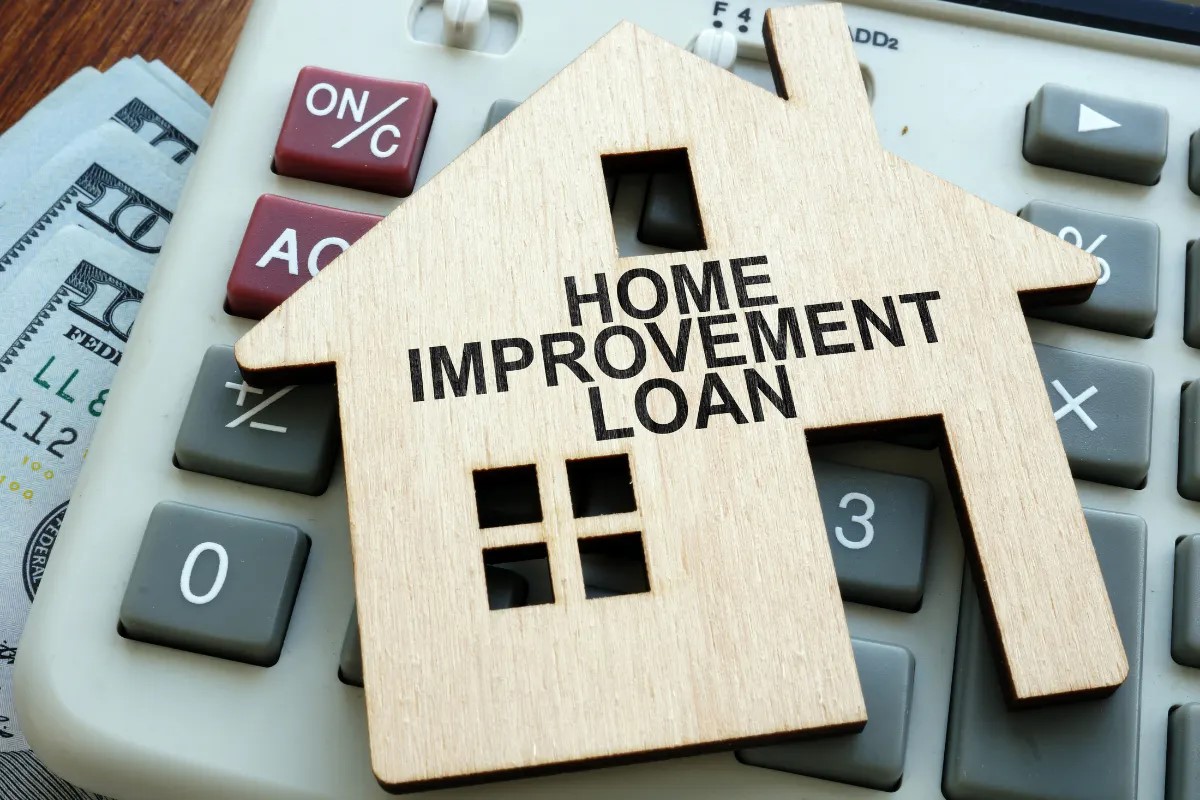
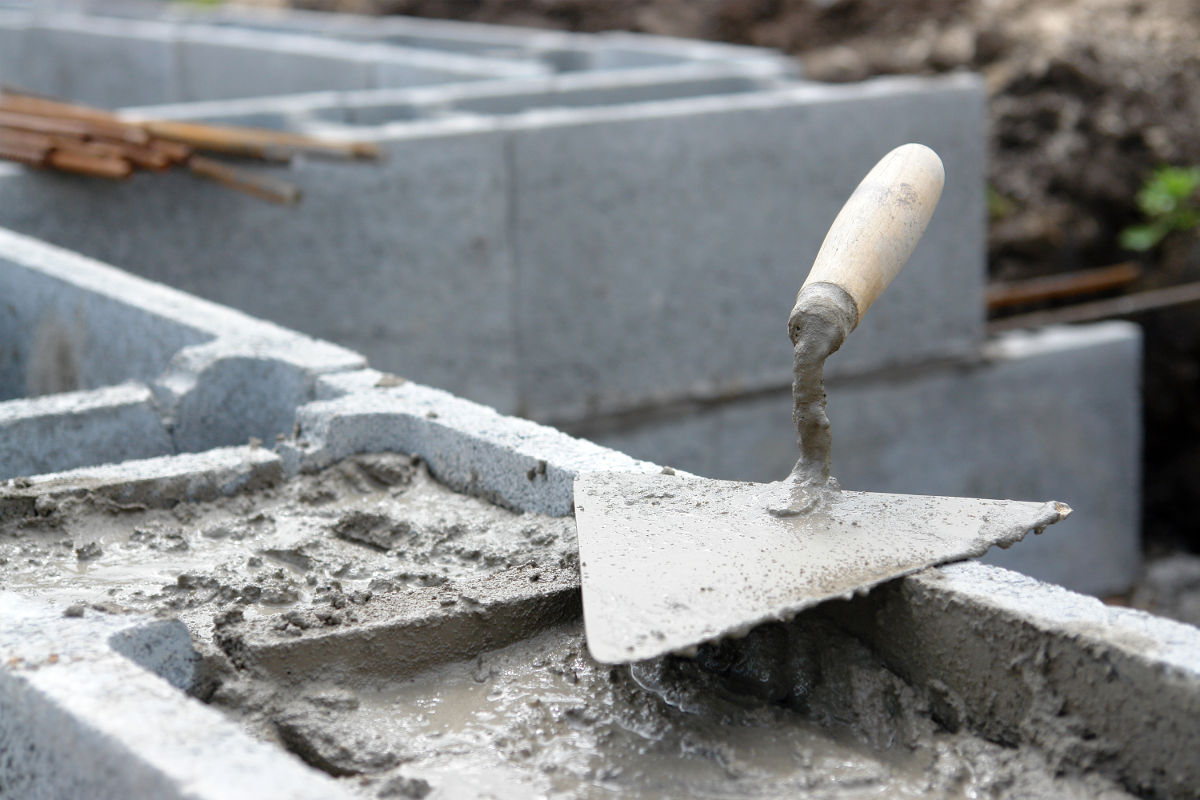
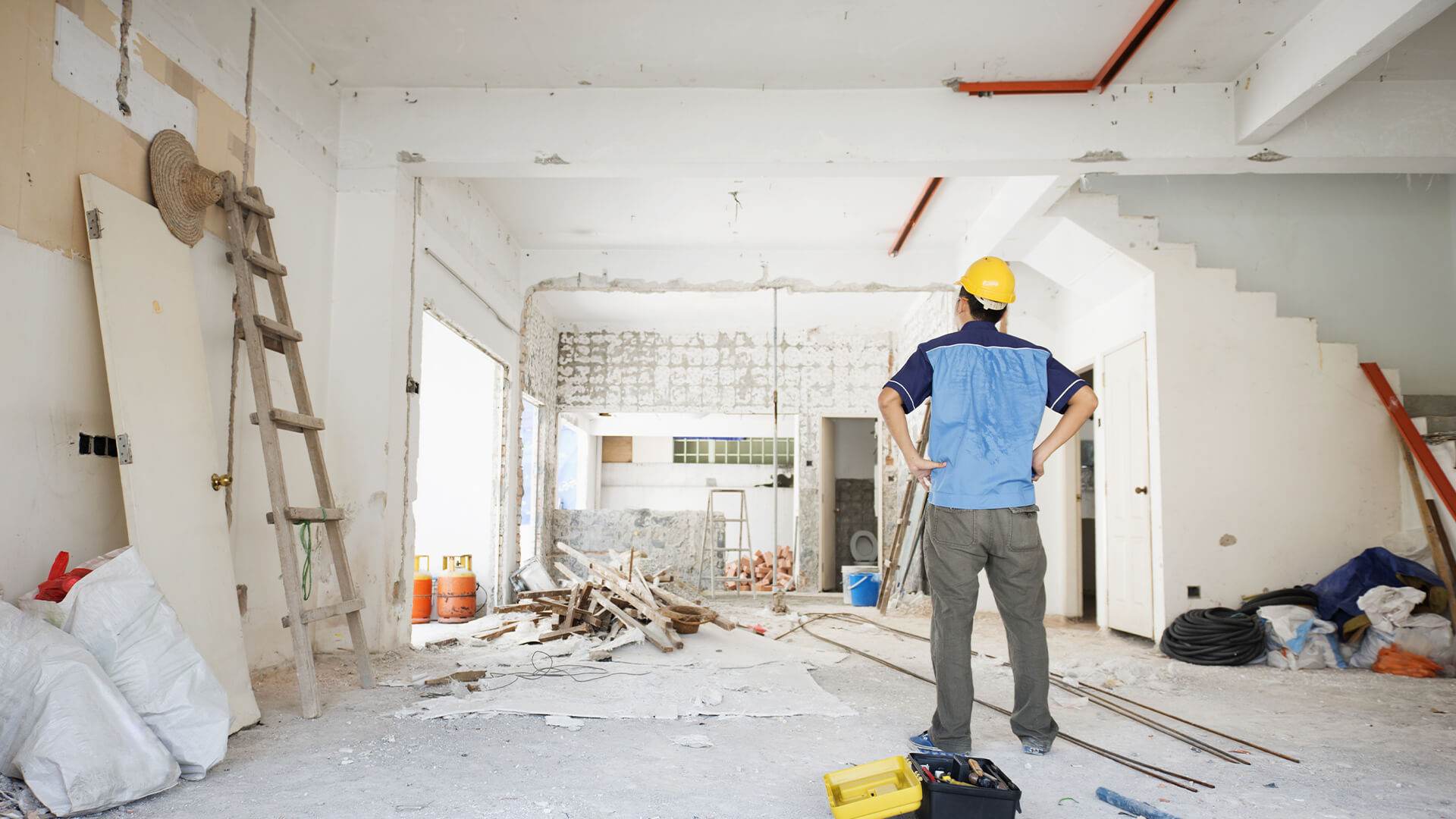

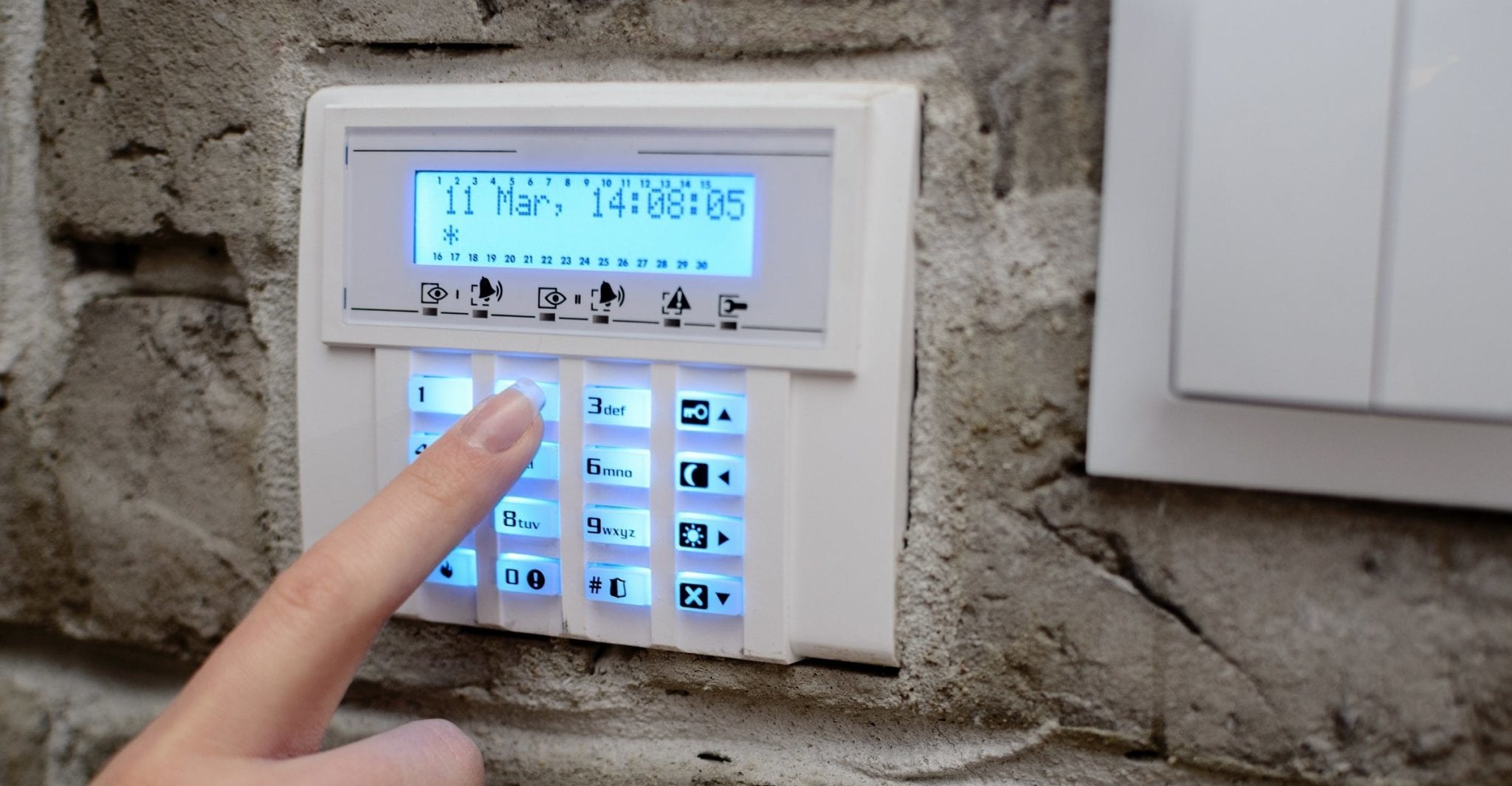







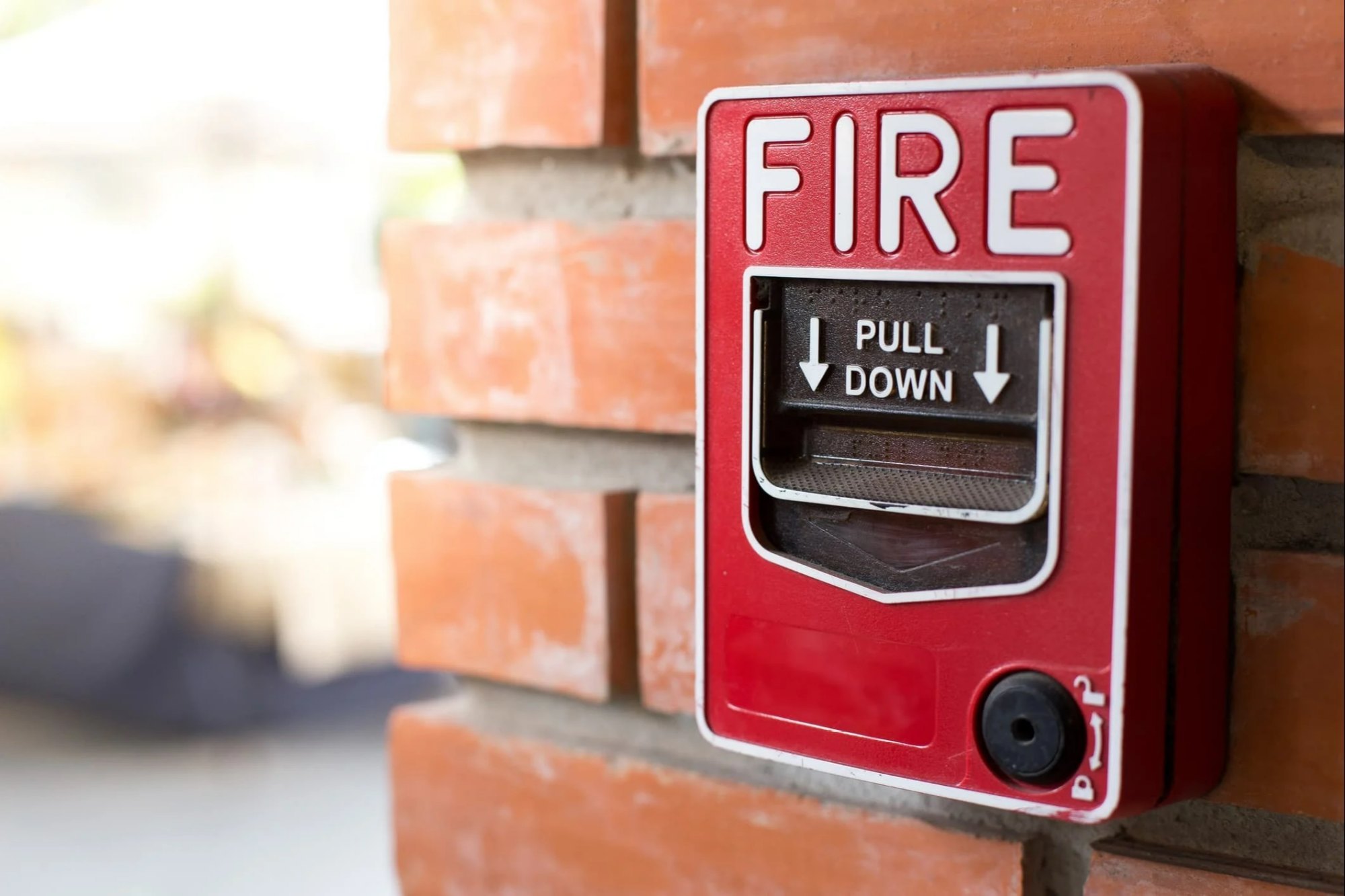

0 thoughts on “How Do Home Renovation Loans Work”